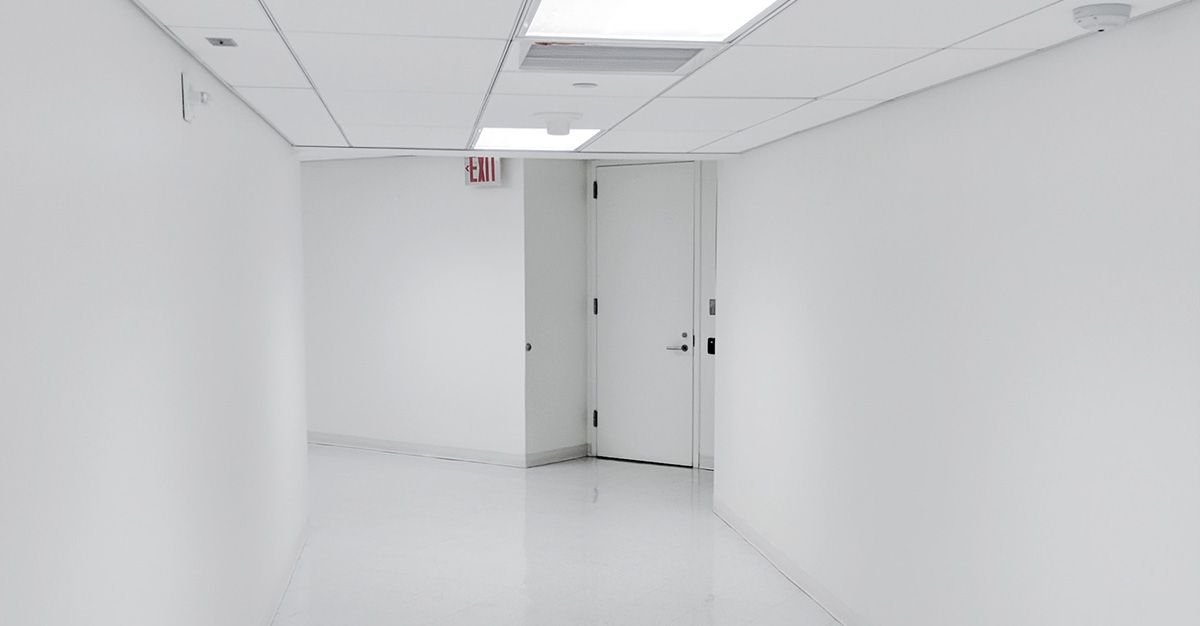RC6, högsta säkerhetsklass enligt europeisk standard
Säkerhetsdörrar RC6 är ett begrepp som motsvarar den absolut högsta säkerhetsklassen för dörrar enligt den europeiska standarden EN 1627. Dessa dörrar är konstruerade för att motstå de mest avancerade inbrottsförsöken och är idealiska för skydd av högsäkerhetsmiljöer som banker, myndighetsbyggnader, militära byggnader, fängelser, häkten, datacenter och andra känsliga platser.
RC6-säkerhetsdörrar är konstruerade med höghållfasta stålplåtar och extra förstärkningar i hörn och sidor för att förhindra att dörrarna kan brytas upp med tunga verktyg eller andra metoder. Dessa dörrar har flera låspunkter, inklusive cylinderlås och flerpunktslås, som ytterligare förbättrar deras säkerhet.
För att uppnå RC6-klassificeringen genomgår dörrarna rigorösa tester utförda av oberoende testinstitut, exempelvis RISE eller SBSC. För att uppnå RC6-klassificeringen krävs det att dörren klarar av en 40-minuters attack med tunga verktyg som mejslar, hammare och borrmaskiner, samt ytterligare verktyg som exempelvis sticksåg och vinkelslip. Attacken utgörs av 15 minuters effektiv angreppstid vilket innebär aktivt sågande, brytande och bultande.
Hur går testningen av RC6-dörrar till?
Testerna utförs av testinstitut som har ackrediterats av CEN, den europeiska standardiseringsorganisationen. Dessa tester inkluderar olika typer av angrepp, som exempelvis mekanisk manipulation, fysisk påverkan och användning av verktyg för att bryta upp lås och gångjärn. Testprocedurerna utförs av personer som har lång erfarenhet av att bryta upp dörrar och därmed god kännedom om dess svagheter. Strikta protokoll säkerställer högsta möjliga kvalitet och pålitlighet.
RC6-säkerhetsdörrar testas även för brandskydd där dörren utsätts för höga temperaturer under en viss tidsperiod för att mäta dess brandsäkerhet. Detta görs i enlighet med europeiska standarder för brandsäkerhet, som exempelvis EN 1363-1 och EN 1634-1, för att säkerställa att dörren uppfyller kraven för brandskyddsklassning. De vanligaste brandklasserna är EI30 respektive EI60 som ger ett brandskydd i antalet minuter som siffran anger. E står för täthet eller integritet mot brand och I står för isolering.
Genom att testa RC6-säkerhetsdörrar på detta sätt kan man garantera högsta möjliga säkerhetsnivå och skydd mot intrång. Testerna möjliggör också en jämförelse mellan olika typer av säkerhetsdörrar och underlättar för kunder att välja den dörr som bäst passar deras säkerhetsbehov.
Var förekommer dörrar enligt benämningen ”Säkerhetsdörrar RC6” och vad är dess användningsområden?
Här är några exempel på byggnader och sammanhang där RC6 säkerhetsdörrar kan användas:
Byggnadstyper:
- Offentliga byggnader som rådhus, domstolar, polisstationer och brandstationer där hög säkerhet är nödvändig för att skydda personal och viktiga dokument och utrustning.
- Militära byggnader och anläggningar som kaserner och förråd där det finns behov av hög säkerhet för att skydda farlig såväl som känslig utrustning och information.
- Känsliga infrastrukturer som kärnkraftverk och flygplatser där hög säkerhet är nödvändig för att skydda mot sabotage och terroristattacker.
- Offentliga institutioner som sjukhus och vårdhem där hög säkerhet är nödvändig för att skydda patienter och personal.
- Kommersiella byggnader som banker, juvelerarbutiker, kasinon och hotell där hög säkerhet är nödvändig för att skydda mot rån och inbrott.
- Privata bostäder där hög säkerhet är önskvärt, till exempel hos personer med höga skyddsbehov eller där höga värden finns i hemmet.
Anläggningar:
- Militära anläggningar som vapenlager och kommandocentraler
- Datacenter där känslig information lagras.
- Fängelser och rättsmedicinska institutioner där hög säkerhet är nödvändig för att skydda personal, brukare och fångar.
- Säkerhetsområden som gränser, hamnar och flygplatser där hög säkerhet är nödvändig för att skydda mot obehörigt tillträde.
- Offentliga evenemang som konserter och idrottsevenemang där höga säkerhetskrav krävs för att förhindra sabotage och terroristattacker.
Verksamhetstyper:
- Företag med höga säkerhetskrav som tillverkar försvars- eller vapenrelaterade produkter.
- Företag med hög risk för inbrott eller sabotage, som lyxbutiker och guldsmeder.
- Finansiella institutioner som banker, värdepappersfirmor och värdeförråd där hög säkerhet krävs för att skydda mot inbrott och rån.
- Myndigheter med hög grad av känslig information, som underrättelsetjänster och försvarsmakten.
Är en RC6-dörr brandsäker?
När det gäller brandskydd så kan det variera beroende på tillverkare och specifikationer för varje dörr. De flesta RC6 dörrar är dock konstruerade med brandsäkra material och testade för att klara en viss tidsperiod av brandmotstånd. Vanligtvis klassificeras dörrarna enligt en standard som kallas EI60, vilket innebär att de klarar av en brand i 60 minuter samtidigt som de är isolerade från värme och rök. En RC6 dörr bör klara av att motstå värme på minst 1000°C under en viss tidsperiod. Det är därför viktigt att välja en pålitlig tillverkare som testar sina dörrar enligt europeiska standarder för brandskydd.
Vad är de största skillnaderna mellan en RC3- och RC6-dörr?
RC3 och RC6 är klasser för säkerhetsdörrar som testas enligt europeiska standarder för att bedöma deras motståndskraft mot inbrott. Skillnaderna mellan dessa klasser är huvudsakligen relaterade till dörrarnas mekaniska egenskaper och konstruktion.
En RC6-dörr är konstruerad med högre säkerhetsstandarder och hårdare material än en RC3-dörr. Till exempel används en tjockare stålplåt i RC6-dörrar, vilket gör dem mer motståndskraftiga mot mekanisk påverkan. Dörrkarmen är också förstärkt och fäst med flera bultar för att ge extra stabilitet.
En annan viktig skillnad är antalet låspunkter som används för att säkra dörren. En RC6-dörr har minst 5 låspunkter, medan en RC3-dörr har minst 3. Låsen i en RC6-dörr är också mycket mer avancerade än de i en RC3-dörr, med en kombination av mekaniska och elektroniska funktioner för att öka säkerheten.
Vad är dessa dörrar tillverkade i?
RC6 säkerhetsdörrar är tillverkade av en kombination av olika material för att uppnå hög säkerhet och brandskydd och bör uppfylla följande krav:
- Dörren bör ha en konstruktion som är klassificerad som RC6 enligt standarden SS-EN 1627:2011+A1:2014.
- Dörrens ram bör vara tillverkad av stål eller aluminium.
- Dörrens fyllning bör vara av en brandhämmande kärna såsom mineralull eller keramiskt material, med en yttre beläggning av stål eller aluminium.
- Dörrbladet bör ha en konstruktion som möjliggör brandskyddande egenskaper enligt EI-klassificeringen.
Dessutom kan dörrarna innehålla andra material som glas, förstärkningsstänger och mekaniska lås. Materialvalet kan variera beroende på tillverkare och specifika behov för varje projekt. Vid användning av glas används härdat skyddsglas som är klassat för RC6.
Vilka variationer kan jag få min RC6-dörr i?
RC6 dörrar är tillgängliga i en rad olika varianter beroende på tillverkaren och dess specifikationer. Dessa variationer kan inkludera olika material, dörrbladstjocklek, brand- och ljudisolering, färg och finish.
Enligt Boverket, en statlig myndighet som ansvarar för byggregler och byggstandarder, är RC6 dörrar vanligtvis tillverkade av stål och kan ha ett dörrblad med en tjocklek på upp till 90 mm. Dörrarna kan också vara försedda med olika typer av låsmekanismer, såsom multipunktlås eller elektroniska lås.
Dessa dörrar kan också ha olika nivåer av brand- och ljudisolering, vilket är särskilt viktigt i högriskmiljöer där säkerhet och skydd är avgörande. RC6 dörrar rekommenderas ha erforderligt brandmotstånd, såsom minst EI30, EI60 men föredragsvis EI90 och EI120 baserat på de miljöer dörrarna i de flesta fallen installeras i.
Dessutom kan RC6 dörrar vara utformade för att motstå olika nivåer av explosionstryck, såsom 50 kPa eller 100 kPa, vilket är viktigt i miljöer där det finns en högre risk för terrorism eller andra former av våld.
RC6 dörrar kan variera i material, dörrbladstjocklek, låsmekanismer, brand- och ljudisolering, färg och finish, samt nivåer av explosionssäkerhet. Notera att olika tillverkare kan ha olika specifikationer, så det är viktigt att verifiera varje enskild dörrs specifikation för att se till att det uppfyller de krav som krävs för ert användningsområde.
Summering
En RC6 säkerhetsdörr är i särklass en av de absolut mest säkra dörrarna på marknaden. Den är tillverkad av högkvalitativa material som ger ett starkt skydd mot inbrott, sabotage och terrorism. Dörren har också en hög brandsäkerhet och utrustas vanligen med en klassificering som EI60, vilket innebär att den kan stå emot en brand i 60 minuter samtidigt som den isolerar från värme och rök. RC6 dörrar finns i olika varianter och kan anpassas efter dina behov. Med en RC6 dörr får du en extra pålitlig och hållbar lösning för säkerhet och skydd.
FAQ
Varför välja RC6 klassning?
RC står för Resistance Class (motståndsklass) och är en standard som används för att bedöma säkerhetsnivån på en dörr eller fönster. RC6 är den högsta nivån och innebär att dörren är konstruerad för att klara av mycket högt motstånd mot inbrott och sabotage. Ett exempel på vad detta innebär är att den klarar av inbrottsförsök från erfarna tjuvar med tunga verktyg i 30-40 minuter. Ett annat exempel är att dörren är väldigt tjock, runt 90 mm, vilket är ungefär 20 mm tjockare än en RC5-dörr. Dörrbladets tjocklek är inte allt, men det säger sig själv att en tjockare dörr blir svårare att byta upp.
Finns det några begränsningar eller nackdelar med en RC6-dörr?
En nackdel med en RC6-dörr är att den kan vara relativt tung och kräva en starkare dörrkarm och tillval. Det kan också vara svårt att hitta en tillverkare som kan uppfylla kraven på högsta säkerhetsnivån. Slutligen är det en sofistikerad produkt som utöver en avancerad tillverkningsprocess också utrustas med exklusiva material. Därav är kostnaden också förstås högre än för lägre klassade dörrar.
Hur maximerar jag en RC6-dörrs livslängd?
Ytbehandlingen på en RC6-dörr kan vara en viktig faktor för dess inbrottsskydd och hållbarhet. Olika ytbehandlingar, såsom pulverlackering, anodisering och färgbeläggning, kan ge extra skydd mot korrosion, slitage och yttre påverkan, vilket kan öka dörrarnas livslängd och även påverka dess inbrottsskydd.
Hur påverkar olika lås och låsmekanismer RC6 dörrars inbrottssäkerhet?
Det finns olika typer av lås och låsmekanismer som kan användas i RC6 dörrar, såsom cylindrar, kodlås, mekaniska spärrar och elektroniska lås. Valet av lås och låsmekanism beror på önskad säkerhetsnivå och användningsområde.





